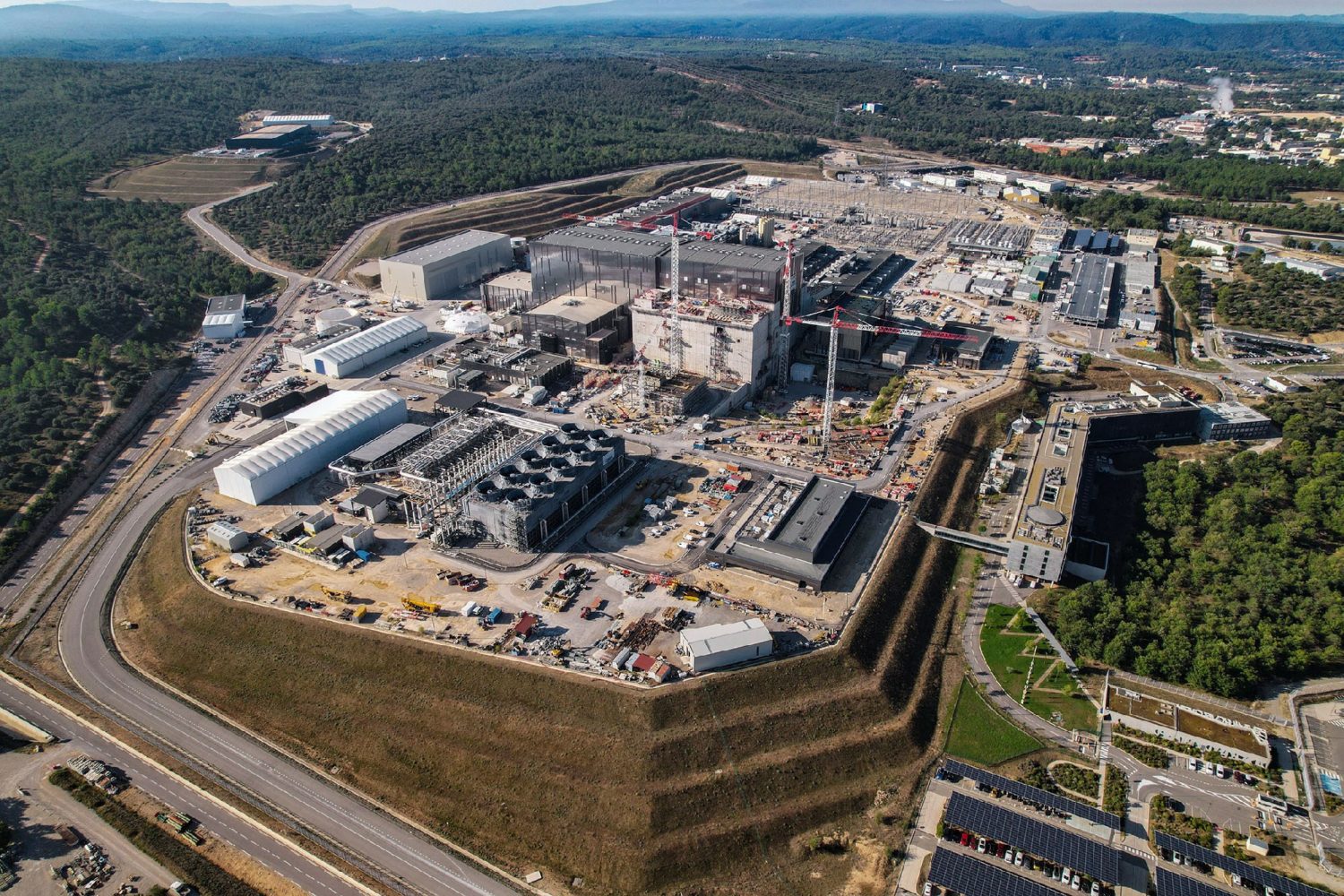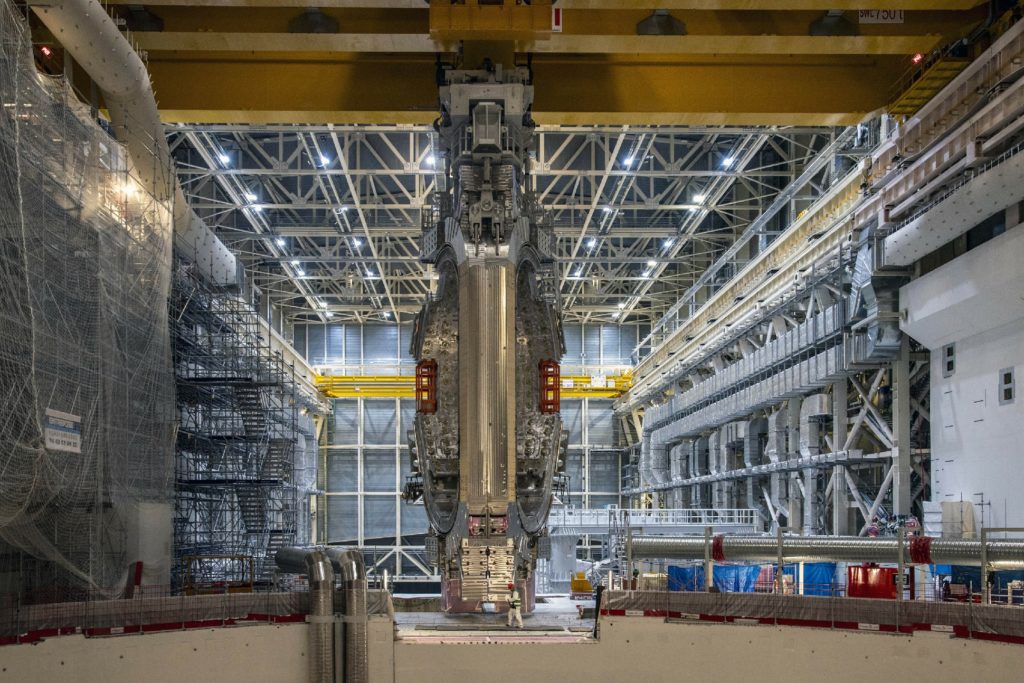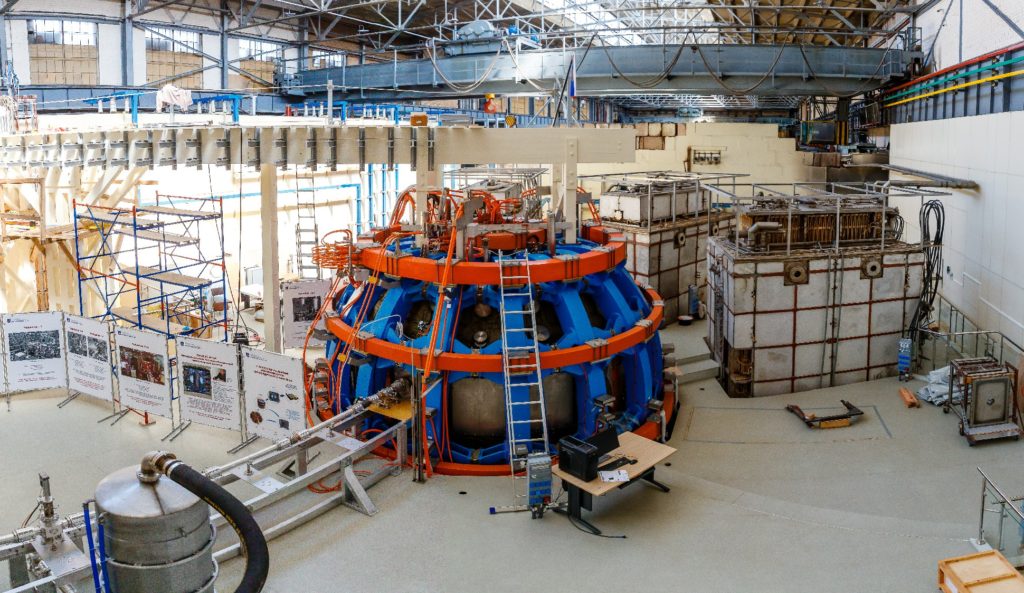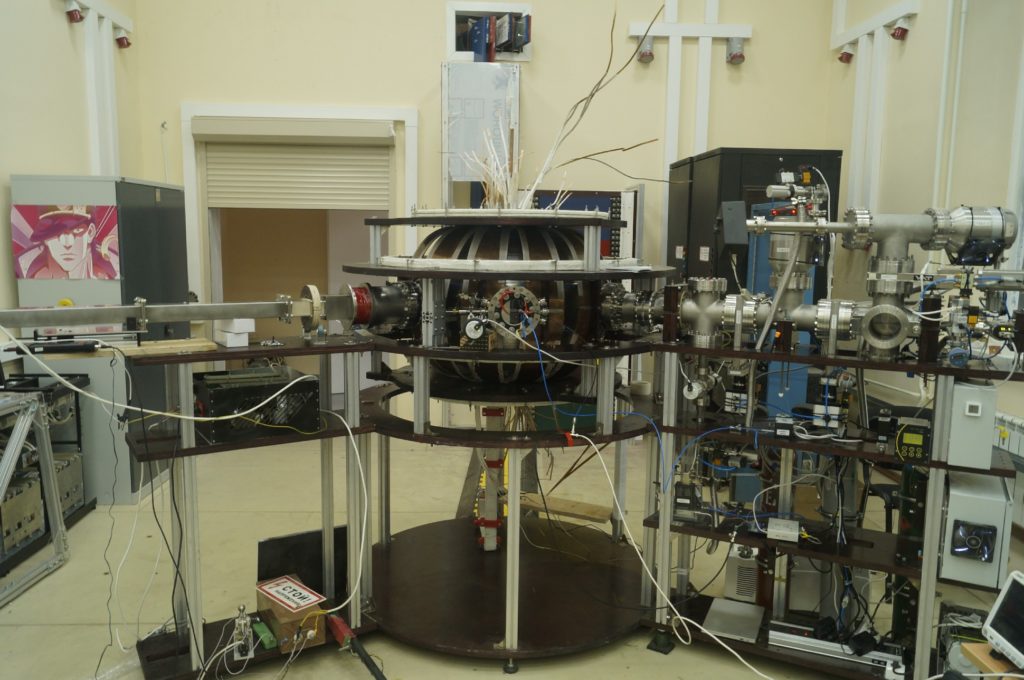
Many Faces of Nuclear Fusion
back to contentsThroughout the year, we have been informing our readers about the latest developments in reactor technology with input from Rosatom. We will finish up our Reactor Technologies series with an article about fusion projects.
ITER
The International Thermonuclear Experimental Reactor (ITER) is the largest thermonuclear project carried out with Rosatom’s input. The Russian nuclear corporation is involved in the production of reactor systems, research, and other aspects of the project.

In late October, Rosatom made the thirtieth shipment of electrical equipment for ITER. Twenty trailers left the Research Institute of Electrophysical Equipment (NIIEFA, part of Rosatom) for Cadarache, France to deliver a large set of fast discharge resistor elements for the switching network units and protective make switches to the ITER construction site. They belong to the power supply and distribution system that makes it possible to obtain the first plasma. The project timeline depends on the early delivery of these components. “The development and manufacture of the entire set of electrical equipment for the system supplying power to the ITER magnets would not have been possible without many years of painstaking work by the NIIEFA research and production team. This testifies to its undeniable authority in the international thermonuclear community,” Moscow’s ITER Center Director Anatoly Krasilnikov commented on the shipment.
Further, in November, Rosatom took part in a discussion of prospective lining materials for the first wall of the reactor’s vacuum chamber at the 33rd Meeting of the ITER Council (the project’s governing body). The Council decided to conduct research into the properties of various materials to select the best one. Institutes of Rosatom and the Russian Academy of Sciences are expected to participate in the experiments. The Council also assessed the progress of construction, discussed collaboration with the French nuclear regulator, and reviewed technical aspects of the construction process.
T‑15MD and TRT
T‑15MD is an upgraded version of the T‑15 tokamak operated by the Kurchatov Institute in 1988–1995. T‑15MD is installed on the foundations of its predecessor. The new tokamak was energized in May 2021, and the first plasma was obtained in the spring of 2023. By now, power generation tests have been conducted. As noted by Viktor Ilgisonis, Director for Research and Development at Rosatom, the tokamak is being upgraded to yield results that will meet international standards.

The Troitsk Institute of Innovative and Thermonuclear Research (TRINITI) is preparing the necessary infrastructure for a reactor technology tokamak (TRT) construction project. TRT is expected to become a full-scale prototype of a future fusion reactor or a neutron source. It will be used to study plasma behavior in quasi-stationary modes close to ignition and improve methods of additional plasma heating, fuel supply, and blanket technologies. The device will also be helpful in developing new diagnostic techniques and tritium technologies. TRINITI plans to complete the first phase of the thermonuclear facility retrofitting project by the end of 2024, which is the prerequisite for creating the power generation infrastructure for the TRT.
Plasma focus
Scientists from the National Nuclear Research University (MEPhI), one of Rosatom’s backbone universities, and the Dukhov Russian Research Institute of Automatics (VNIIA, part of Rosatom) developed a dense plasma focus neutron generator capable of initiating miniature fusion reactions.
Its emitter consists of a small (a few centimeters in diameter) plasma focus discharge chamber, an energy storage device, and a high-voltage switch. To create plasma, gaseous hydrogen isotopes are pumped into the plasma focus chamber, then high voltage is applied to two electrodes. When the voltage is applied, the switch is triggered, and all the energy from the storage device is transferred to the chamber. The current of hundreds of kiloamperes ionizes the gas in the chamber and forms a plasma sheath, i. e., hot plasma of a specific configuration. The sheath accelerates between the electrodes under its own magnetic field and is compressed into a point called ‘pinch.’ This is the plasma focus where fusion reactions take place. They last for several tens of nanoseconds. At that moment, the emitter generates various types of radiation, including neutron radiation, X-rays, plasma jets, electron and ion beams. When the voltage is removed from the electrodes, the gas returns to its normal state.
This device can be used to calibrate neutron and gamma ray detectors for mega science projects. It can also be employed to test detection system components for radiation resistance. Such tests are necessary for on-board equipment of spacecraft and radioelectronic components. Another potential application of the device is to study the impact of various types of pulsed radiation on living organisms and conduct neutron activation analysis of different substances.
“All the equipment used to be calibrated using pulsed sources, reactors and accelerators. These are multi-tonne jumbos with numerous control systems. Our unit weighs as little as 150 kilograms and can be moved by two trained engineers,” says Elena Ryabeva, Deputy Director at the MEPhI Institute of Cyber Physical Systems. The dense plasma focus neutron generator is already in use by students in the laboratory.

As Rosatom chief Alexey Likhachev said at the Russian Energy Week, the Russian nuclear corporation does not yet have a concept of fusion commercialization. Nevertheless, he promised to continue the work and invest money and effort in the idea. Speaking at the Conference of Young Scientists, Russian President Vladimir Putin also promised to allocate funds for fusion research.
Thermonuclear reaction
A controlled thermonuclear reaction differs from a nuclear reaction in that the former is based on fusion of lighter nuclei into heavier nuclei, while the latter is based on fission of heavy nuclei.




